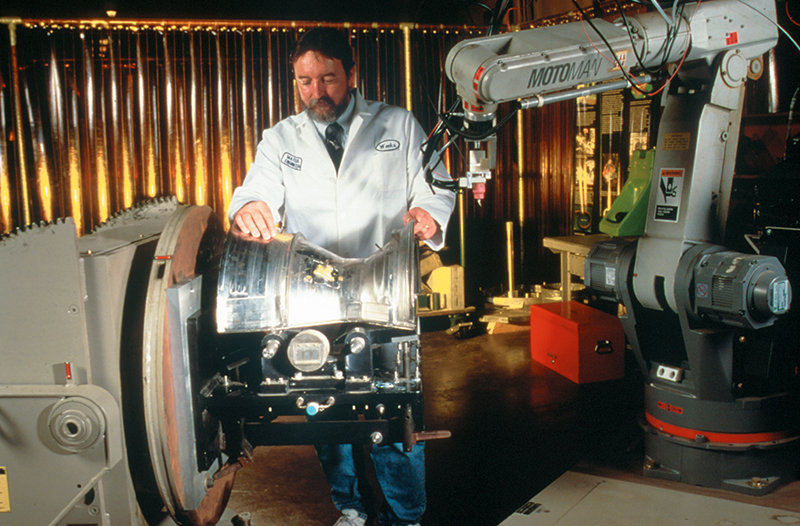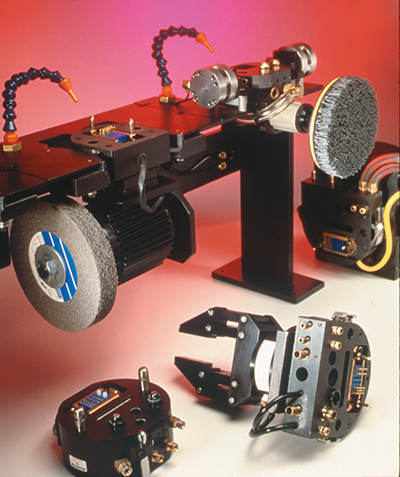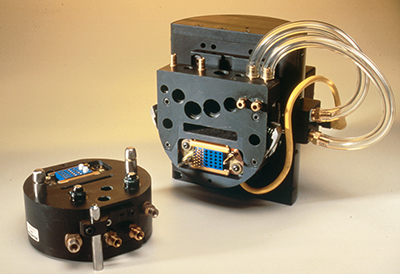
Robot Tools
Robotics and Automation Corporation, Minneapolis, Minnesota manufactures equipment for robotic systems, in particular a variety of tools known as "end effectors," devices attached to the end of a robot arm for picking up, grasping, manipulating and transferring objects. The company traces its lineage to 1981, when a predecessor organization-INTEC Corporation-was formed to design and market robotic peripheral equipment. In May 1984 INTEC became Mecanotron Corporation and in 1989 Mecanotron was sold and incorporated into Robotics and Automation Corporation.
Among the company's newer products is the Automatic Robotics Tool-change System (ARTS), a system designed to meet growing demand for multiple task work cells for welding and plasma spray functions that require grinding and finishing; deburring, deflashing, routing, hole drilling or parts replacement; and multiple tool disk operations. The technology incorporated in ARTS systems was originally developed under contracts with Marshall Space Flight Center and with Rockwell International, one of NASA's principal contractors.
The ARTS systems were designed to work with the company's CFD (Constant/controlled Force Device) product line, a series of end effectors and bench mounted devices for controlling the constant pressure of abrasive tools used to deburr, grind, polish and finish products fabricated by welding, casting, molding, forging or machining.
Robotics and Automation Corporation's CFD line includes three end-of-arm devices and two bench-mounted devices. They do not require that the robot apply and control the force, only that it move along a normal programmed path over the work piece; the CFD applies and maintains the required processing pressure of the finishing media to the work piece.
When the surface to be finished is very rough and coarse, several different grades of finishing media may be needed, as well as different speed and power as the surface finish is transformed. To accommodate this multistep process within a single work cell, and with a single robot, Robotics and Automation Corporation developed the automated tool-change system.
The ARTS-I is being used in industrial systems with six tool positions ranging from coarse sanding disks and abrasive wheels to cloth polishing wheels with motors of various horsepower. The ARTS-II allows a robot to change welding torches automatically, or to exchange a welding torch for a CFD end effector to finish a welded assembly with a welding robot; using a second tool-changer (ARTS-I) enables finishing the surface conditioning process.
Robotics and Automation Corporation has sold more than 90 robotic work cells using CFD/ARTS devices, about one fourth of them in the plastics industry. The largest single user category is fabricators of plastic body parts for the auto industry; other uses range from fabrication of radar domes by Texas Instruments to advanced composites at Aerospatiale in France.

The tool rack of the Automatic Robotics Tool-change System includes a two-finger gripper, a grinder, a coated abrasive brush and a welding torch.

The quick disconnect system allows changing tools with hydraulic, pneumatic or electric power.

A Rocketdyne technician inspects welds on the Space Shuttle Main Engine created by an advanced robotic system.













